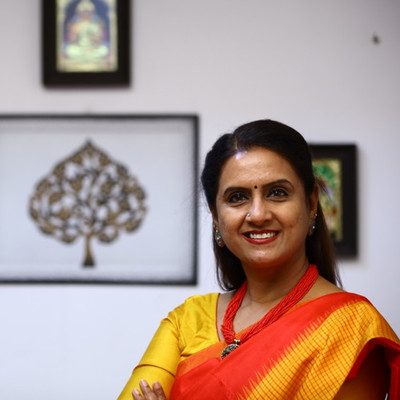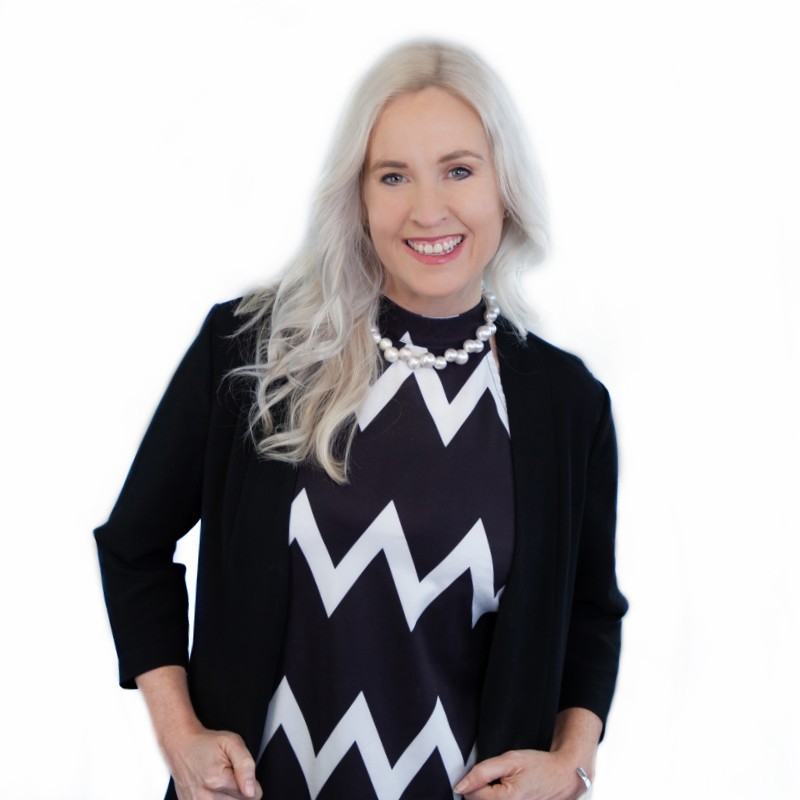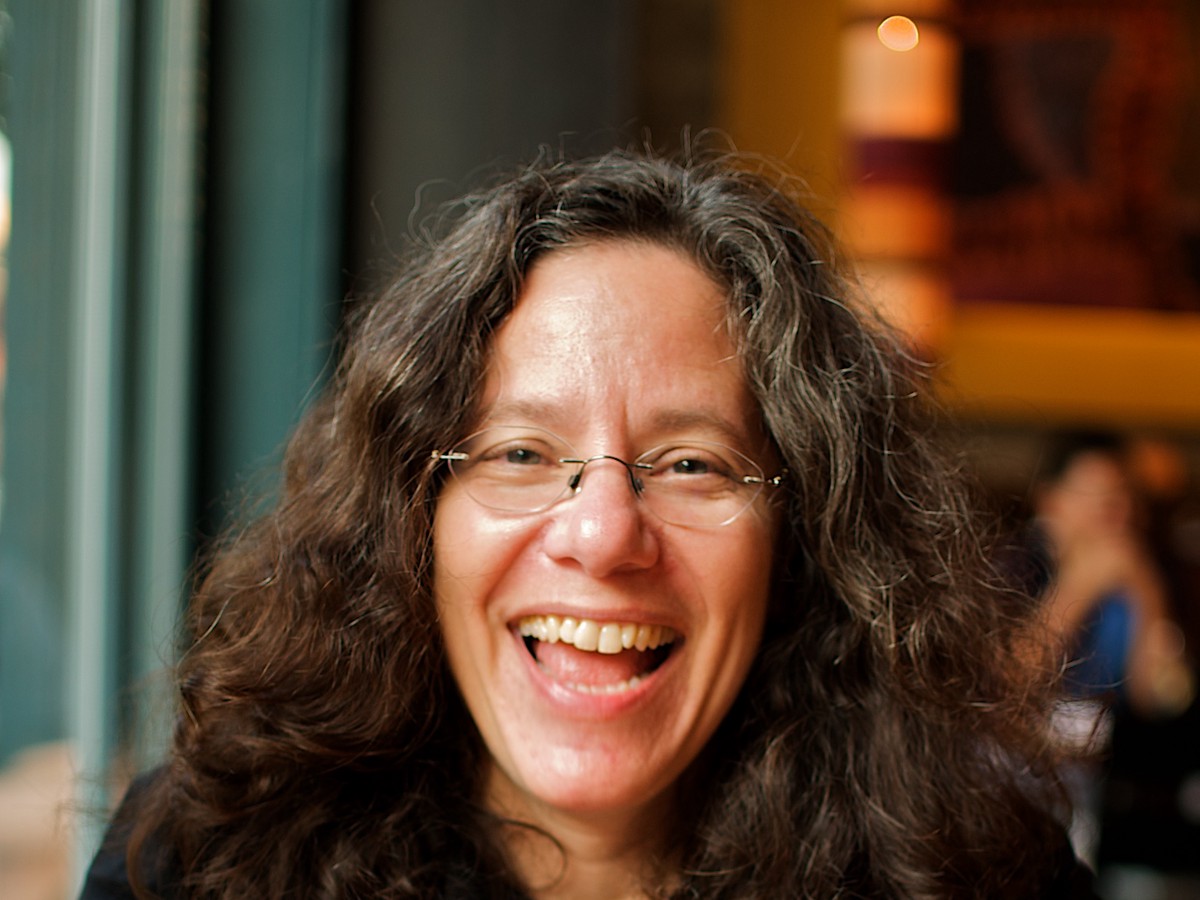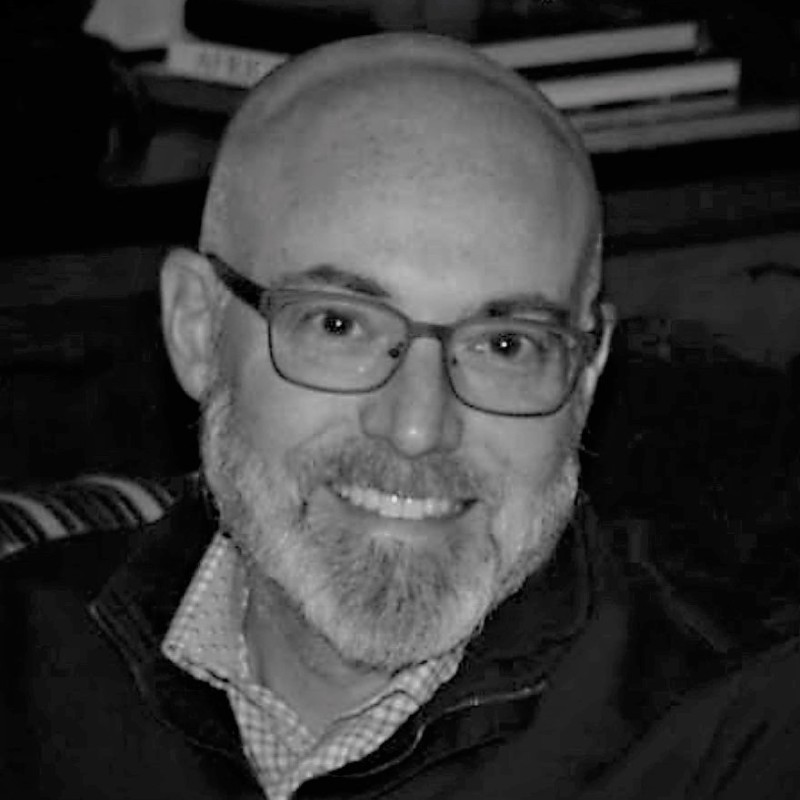In a fast-developing country like India, women who want to have a bustling career and re-enter the workplace after a break face serious challenge. There are issues of re-skilling, getting acquainted with changed to the workforce, and dealing with the bias of how we look at women trying to get back into the world of work. This episode also looks at inclusion practices, how LGBTQ folks are looked at in India, and why Dr. Saundarya is bullish on policies to protect women, but fears that the hardest work is yet to come.
What we learned from this episode
We have blind spots and subconscious biases which prevent us from actually understanding that there could be more than one interpretation of what we see and more than one reality of what we see.
People hire others who very similar to themselves because of a tendency called affinity bias. When people in the majority do this, they become an even larger homogeneous group.
What you can do right now
Prepare your work environment for accepting diversity. Identify your biases, blind spots, and and judgements and remove them.
Key quotes
“When a woman has taken a break in career and wants to reenter the workplace that so then unless the workplace is de-biased, unless it is removed of blind spots, unless it is truly inclusive, there is no way that she can continue her career there and begin contributing, not only to her department or organization, but also to her own self.”
“Both men and women should become fully aware of what it means, what it means to live in a contemporary world doing the best that you can in order to ensure that, not only does your own family, your own organization rise to its fullest potential, but we all do so without judging each other, without imposing dead dogmas, like patriarchy in the name of rules and regulations that were created for a very, very different world.”
“Removing biases is like removing the blindspots in your life.”
“You’re talking about acceptance. You’re talking about not being judgmental. You’re talking about equally looking at people who are very, very different from you, very, very different from each other.”
Today, our guest is Dr. Saundarya Rajesh. She’s the founder and director of AVTAR and this is Work Minus Blind Spots. Hi, Dr. Saundarya. How are you today?
I’m great, Neil. Fantastic speaking to you. Looking forward to the show.
We’re very excited to have you on. Why don’t we start the show with you just telling us a little bit about yourself and your work?
I am a social entrepreneur, founder and president of the AVTAR group. And I work very extensively in the space of Women’s Workforce Participation in India. So, that automatically means that we work with women who have taken breaks in careers, and in India, that means it’s a solid 48% of all women under the age of 30 who take a break in career. So, bringing them back to the Indian workplace is one of our biggest mission statements. So, that’s the space that I work in.
Wow. Let’s dive into that statistic a little more. You said nearly half of the women under the age of 30 have taken a break from their career in India?
Yes, you’re right. And that is the truth. In India, women take career breaks very, very frequently, and not all of them actually make it back into the workplace after the very first time. So that means you have women who are very, very keen on having a bustling career, on making it big in the world of work, but then they’re not able to. And there are many, many reasons for this. And I think in today’s show, we are going to be discussing one of the biggest reasons why that happens.
Yeah, absolutely. Well, we’re calling this episode Work Minus Blind Spots. So, what do you mean by blind spots?
So, blind spots are nothing but biases. So these are unconscious biases which people have in their minds. And the interesting part is that just like a blind spot, which is there in front of you when you’re driving and you do not see it because of the angle at which it is, in the same way, the mental blind spots are unconscious biases which you still hold in your mind and in your behavior, but you do not know that it is actually there and you’re not aware of it.
So, what are some examples of blind spots you’ve seen in your work in the corporate world?
There are many such unconscious biases. But let me just give you a very, very popular anecdote in our world of work to describe a blind spot. The story goes that a father is driving his only son to school one morning, and on their way, their car gets involved in an accident and the father dies on the way to the hospital, the boy is rushed into the hospital for lifesaving surgery. So, the surgeon walks into the operating room, takes one look at the boy and says, “I cannot operate on this child. He is my son.” So, when I say that, a lot of people in the room are at first puzzled. They did not know how to respond. It’s only later that they understand that when you say surgeon, you don’t necessarily always only mean male. It obviously includes female surgeons and therefore the person that was about to operate on the boy is the mother. So, that’s a classic example of a blind spot. Today, they’ve even moved further than that. And then you asked the question how is it possible? It could be that someone has an opinion that the surgeon was male but the boy is the child of gay parents, two gay men who have adopted a child. So, it could even mean that. So, therefore, when you hear something and you automatically jump to a conclusion, then that means that your mind is operating under a bias. So, this could be an example of how we have blind spots which prevent us from actually understanding that there could be more than one interpretation of what we see, more than one reality of what we see.
That’s a great story. Let’s look at your specific context. We’ve talked about diversity inclusion in the U.S. context, but in India, it’s a bit different. There’s a lot of ways India is much more traditional in their viewpoints but there’s a lot of ways that it’s also very progressive. So, tell us a little bit about the landscape of India when it comes to diversity.
If you look at diversity and inclusion from an Indian point of view, apart from the usual strands of diversity, which is they speak about gender, generation, sexual orientation, ability, all of these, we also have a few other very core strands of diversity in Indian context, which include socioeconomic diversity, the urban rural diversity that’s there, there is religious diversity, there is linguistic diversity, and of course, there is cultural diversity. So, these are all different forms of diversity, different identity strands, which you find not only in India as a country, but very specifically in the Indian workplace. So, therefore, the presence of biases that people may have against a particular community, against a particular religion, against a particular socioeconomic group. All of these come into play in the Indian workplace and it becomes imperative for managers, for leaders who want to create workplaces that are profitable, that are productive, that are creative to actually very consciously get rid of these biases.
Let’s talk specifically about women coming back into the workforce, which is your specialty. So, what are some of the challenges that they face when they’re trying to reenter the workforce?
The conundrum that the Indian woman professional faces when she comes back into the workplace is a very interesting one. It’s something that everybody, every manager, every leader in India should be very cognizant of. So, the Indian woman professional takes breaks, for the most part, on account of maternity, taking care of her family, taking care of elders in the family, and of course, child bearing. All of these put breaks in her career and she ends up taking breaks that are as long as even 16, 18 years before she finds the equanimity that she requires to make that reentry back into the workplace. Now, when she comes back, she is therefore faced with this double hit. On the one hand, she is a woman professional who has taken a break for a very long time and therefore people managers are not comfortable with someone who has taken a break for such a long time. On the second hand, the second big hit that she faces is that the world of work that she was used to maybe 3 years ago or 4 years ago or 15 years ago before she took that break, it’s absolutely changed. It’s no longer that world at all. So, she has to upskill herself. She has to reskill herself. She probably has to look for a different type of job and a career in which she makes her reentry. So, all of this put together creates a lot of complications for the Indian woman professional when she thinks of making that reentry after the break.
We talk about diversity a lot but also important is inclusion. So, as soon as somebody is part of back to the workforce, they want to also feel like they’re an equal member of the team. So, what challenges specifically do women face when it comes to maybe they get rehired when they’re in their 30s, 40s, after this break, but is it easy for them to reintegrate with the team?
I think that’s a brilliant question, Neil. In fact, what we always say is that while diversity is the hardware, diversity is quantifiable. It’s all the numbers. It’s the policies. It’s the infrastructure. It is the plans and programs for hiring women who are reentering after break, for hiring people from the LGBT community, for hiring people with disabilities and all that. It doesn’t work without the software. And the software is inclusion. Software is actually your mindset which prepares an environment that will be accepting of all this diversity. So, if you do want to leverage the power of diversity, then the first thing that you must do is actually prepare your own environment for accepting that diversity. So, the minute you talk about preparing your environment, it means that you’re talking about removal of biases. You’re talking about removal of blind spots. You’re talking about acceptance. You’re talking about not being judgmental. You’re talking about equally looking at people who are very, very different from you, very, very different from each other. With the view that they all have their own story, they all have their own journey, and they’re all equally eligible to rise to the fullest of their potential in the workplace. So, that software is inclusion. So, when a woman has taken a break in career and wants to reenter the workplace that so then unless the workplace is debiased, unless it is removed of blind spots, unless it is truly inclusive, there is no way that she can continue her career there and begin contributing, not only to her department or organization, but also to her own self.
So, we’ve talked about there’s lots of different groups within India. You mentioned you have linguistic groups, you have social groups, you have socioeconomic groups that are there. What tend to be the biggest challenges for people to get over when it comes to recognizing and accepting people from other marginalized groups into their teams?
It’s a very simple question of the majority and the minority. So, when you have a majority group, and it could be any type of group. It could be people who are very well-educated or it could be people who are from a particular linguistic group or who are familiar with the particular language or who speak that language. Or it could be simply gender, men. So, what typically happens is this concept of bias, and that is one particular bias which is very, very strong and which plays havoc with your best laid diversity and inclusion plans at the workplace. And that bias is called affinity bias. And when you have that bias, it means that you will only end up hiring people who are like you. So, that means anybody in the Indian workplace who is not part of the majority, who is part of a minority group, whether it be with regard to sexual orientation or it be with regards to gender or it could be like we spoke about religion, linguistic minorities, they all face this challenge because for them to become somewhat of number that is also critical mass, it takes time and it takes a leader who will look beyond these differences and start hiring only for talent, only for potential. So, when that happens then very clearly this issue of diversity and inclusion is actually solved. But until that time, the biggest challenges that people who are part of the majority, they tend to hire people very similar to themselves. So, it tends to become a very large homogeneous group.
So, what do you tell a manager then who has that bias and isn’t quite aware of it? How do you convince them that it is useful, it is good, it is good for their team to bring in a diverse perspective of people and to make sure they feel included? What are the ways you usually motivate people to make those changes?
So, in any country, whether it is the U.S. or India or Australia or any of the countries around the world, profit businesses, which is businesses which are paid for commercial purpose, need to see a value in anything that they do. So, it could be that diversity and inclusion is not presented as a really powerful business tool for the organization. So, in order for a company to accept that diversity and inclusion can actually result not only in creating a better world, in creating a fairer world, in creating a more inclusive world, it also actually ends up creating a much more profitable, productive business for you. That’s really when the coin drops. That’s really when the organization begins to realize that there is a business case for diversity and inclusion. And in order to clarify this, organizations like mine, AVTAR, what we do is we actually run a lot of sessions and programs for these organizations where each individual organizations business case for diversity and inclusion, for having very diverse people in their workplace, for creating a very inclusive workplace that is clarified, that is brainstormed, and in those sessions, individual managers and leaders, they actually understand what sort of biases they have been holding for a long time and how is it that they can rid themselves of those biases and actually create a workplace which attracts the best talent possible. So, that’s how we essentially work with people to create a more diverse and inclusive workplace here in India.
Wow. Fantastic. You mentioned sexual orientation a few times, which is obviously different in every society. Everyone’s figuring out how to handle this. So, tell us what India is like in terms of how companies and managers and hiring managers view sexual orientation and how the general culture does and how that’s accepted into the workplace.
So, in India, until a couple of years ago, homosexuality was a criminal offense. It was a crime. So, we did have a lot of issues where we needed to make sure that people belonging to the LGBT community, they felt safe and secure. They felt accepted. It was a very big, challenging, daunting task in the hands of talent managers in India because they could not create a truly inclusive work environment until a couple of years ago. But today, the situation is definitely different. India’s court actually ruled that the section in the Indian penal code which was against homosexuality, that was repealed. So, homosexuality is no longer a crime. Of course, gay marriages are still not legal or we don’t have a lot of protections for gay partners as of yet, but nevertheless, I think the repealing of the act which had made homosexuality a crime is itself a long way. I mean, it’s a big win for the community and it also means that organizations that want to create a truly inclusive, open, accepting, nonjudgmental workplace are now able to do so without fearing that the law will come down hard on them. So, I think things are getting better for the LGBT community in India. I do find that a lot of them are very vocal. They’re very accepted. There are certain industries in which members of the LGBT community are doing very well. For instance, the beauty industry, the fashion industry, these are industries in which we do find a lot of people from the LGBT community actually being accepted. We also have many out and open members of the gay community who are in very senior positions, leading positions in India and who do speak quite vociferously about what is required for the community, for the society to accept every member, every human being wholly for who they are and not reject anybody on the basis of a previously held biases, previously held dogmas, which could turn out to be very counterproductive.
Excellent. Wow. Let’s look into the future a little bit. There are so many different areas of diversity and inclusion that are involved that you mentioned in India. If you just look at the next two or three years, where do you feel like India is going to make the most progress from your viewpoint? Is it in the area of gender? Is it in the area of accepting women who are coming back from a break or anyone who’s coming back from a break? Is it in the area of sexual orientation, religion, language? Where do you feel like is the most likely area where they’re going to make a big leap?
So, I do believe that India is trying to gain a whole lot by becoming extremely gender inclusive and this is not only for the large corporates. I’m also talking about the small and medium enterprises in India, which actually collectively imply a larger percentage of women than all the large corporate put together. So, if India were to actually make it very, very conducive to businesses to hire women and especially to hire second career women by creating policies, by creating legislation, by creating financial incentives for these organizations, especially belonging to the micro, small, and medium category to hire more and more women, I expect that India will actually fast track advent into the list of fully developed nations simply by virtue of having a larger number of women in the workplace. So, I do expect a lot of great things to happen for women in India. And we have had some amazing stuff that’s happened in the last couple of years. We’ve had India joining the elite, a list of nations who offer a six-month, fully paid, government endorsed maternity break for all women.
So, that is something fantastic. It’s fabulous. It means that every Indian woman who works and who pursues a career will enjoy a six-month, fully paid maternity break before she comes in. And we find a lot of organizations that are able to actually take a lot of effort in ensuring that her maternity phase back is very smooth. It’s very seamless. And she’s able to come back into a workplace and quickly upscale herself to make up for lost time as it were. So, organizations are really conscious about this and they are doing everything that they can to make sure this happens. In fact, at AVTAR, we run India’s largest gender analytics exercise and this is called the working mother in AVTAR 100 best companies for women in India. And in that study, we have come to realize the extent to which organizations are super keen on increasing their gender diversity ratio and all of the different enablers that they are putting in place to make sure that this happens. So, I would say that I do predict that some fantastic progress is on the cards for the Indian woman professional. And I do hope to see that she becomes one of the most prominent reasons why India transforms into a developed nation in the next few years.
And then on the other side, where do you feel like India still is going to have a long road to go, whether that’s deep seated biases or just things that are really hard to get over? Where do you think it’s still going to be a long road?
So, this is very interesting because while on the one hand I feel that gender diversity and gender inclusion is one of the most biggest opportunity areas for India to actually leverage in order for India to really become a developed nation. On the flip side, I’m quite concerned about a lot of the biases that will actually hold the Indian woman back. And one of these biases is actually patriarchy. It’s the entire thinking of the fact that the male is somehow superior to the female. And how it has played out in the society, in the conditioning of young girls and boys, in the way career decisions are taken, in the inherent safety that has to be provided for women. All of these things you find patriarchy has its claws that deep. So, one of the things I really worry about is that this bias, this bias of patriarchy should be removed, should be eradicated. Both men and women should become fully aware of what it means, what it means to live in a contemporary world doing the best that you can in order to ensure that, not only does your own family, your own organization rise to its fullest potential, but we all do so without judging each other, without imposing dead dogmas, like patriarchy in the name of rules and regulations that were created for a very, very different world. So, that would be my biggest concern, Neil.
It’s very interesting. That’s actually a double-edged type thing where it’s the greatest potential and it’s an area where India is making a lot of progress, but it’s also the area where there’s probably the biggest challenges as well. So, that’s very interesting. Dr. Saundarya, tell us where we can go to stay in touch with you.
Thank you so much for the opportunity to speak to all your viewers and your people who are part of your community, Neil. I’m available on Twitter so you can reach out to me on Twitter @saundaryar. Of course I’m also available on Linkedin and people can reach out to me on Linkedin and do check out portal avtarinc.com. That’s www.avtarinc.com. And that’s where you will find a lot of resources including articles written by me about unconscious biases, about the Indian woman professional, about taking careers and all of that. So, do check us out and it’ll be great to be in touch with your viewers.
Absolutely. We’ll put all those links in the show notes, Dr. Saundarya. Thank you so much for being on and sharing your insights with us.
Thank you so very much.
Dr Saundarya Rajesh is a social entrepreneur and Founder-President of Avtar. Accredited as the originator of the concept of Second Career opportunities for women in Corporate India, Dr Saundarya is an advisor for several companies on Inclusion and Diversity. She has been recognised as a “#100Women Achiever” by India’s Ministry of Women and Child Development as also listed in the United Nation’s “Women Transforming India”. Her debut book, The 99 Day Diversity Challenge: Creating an Inclusive WorkplaceTM was launched in 2018 in Chennai.












